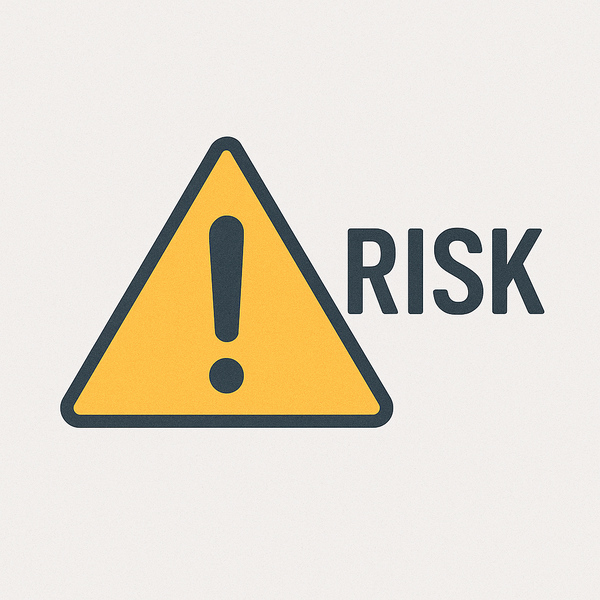
Managing risks in a project can be a bit of a headache, right? But, having a solid risk log template can really help keep things in check. It’s like having a roadmap for potential bumps along the way. This article will walk you through everything you need to know about using a project risk log template. From understanding what it is, to how you can tailor it to fit your specific needs, we’ve got you covered. Let’s dive in and simplify your risk management process.
So, why bother with a project risk log template? Well, it’s like your project’s safety net. It helps you keep track of potential risks, assess them, and figure out how to tackle them. This way, you’re not just reacting to problems as they pop up. Instead, you’re ready for them, which means your project is more likely to finish on time and within budget. Think of it as your go-to tool for avoiding those last-minute scrambles.
Here’s what you get out of it:
Having a risk log is like having a roadmap. It guides you through the bumps and turns, making sure you stay on track.
A good risk log template isn’t just a list of worries. It’s structured and thorough. Here’s what you should include:
Using a risk register can help you organise these components effectively, ensuring all potential risks are logged and monitored properly.
You might wonder how this is different from other project management templates. Well, a risk log is all about potential problems. Unlike a simple task list or a budget spreadsheet, it’s dynamic. It changes as your project evolves.
In short, while other templates help you manage the everyday tasks and resources, a risk log keeps you prepared for the unexpected. It’s your project’s crystal ball, helping you foresee and address potential hiccups before they derail your plans.
Alright, so you’re ready to dive into the world of project risk management. First things first, you need a solid plan to kick things off. Here are the basic steps to get you started:
Every project is unique, so your risk log should be too. Customising your template means:
Avoid these pitfalls to keep your risk management on track:
A well-maintained risk log is like a map in the wilderness. It guides you, shows potential pitfalls, and helps you navigate through the toughest terrains. Keep it updated and it will serve you well.
Alright, let’s kick things off with risk identification. It’s all about spotting what could go wrong before it actually does. You want to give each risk a clear name or ID, so your team knows exactly what you’re talking about. Think of it like naming your pets—simple and to the point. You might also want to jot down when you first noticed the risk. This helps track how long it takes to sort things out.
Categorising risks is the next step. It helps you quickly figure out what kind of problem you’re dealing with. Is it a budget issue, a tech glitch, or maybe something to do with your schedule? By putting risks into categories, you can decide who needs to tackle them and how fast.
Not all risks are created equal, right? Some are like a little rain cloud, while others are full-on storms. Prioritising risks means figuring out which ones need your attention first. You can use a simple number system—1 for low, 2 for medium, and 3 for high. Or if you’re more of a visual person, try colour-coding them.
Impact assessment is where you think about how bad things could get if a risk actually happens. You weigh this against how likely it is to occur. Basically, you’re asking, “How much is this going to mess up my day?”
Once you’ve got your risks sorted and prioritised, it’s time to come up with a game plan. Mitigation strategies are all about reducing the impact of risks or avoiding them altogether. Sometimes, you might need a team huddle to brainstorm solutions. Document these strategies in your log, so everyone knows what’s up.
Monitoring is key. Risks can change over time, so you need to keep an eye on them. Update your log regularly to reflect any changes in status or priority. It’s like keeping your plants alive—constant care and attention.
Having a solid risk log helps you stay on top of potential issues before they become big problems. It’s your secret weapon in keeping projects on track and your team focused on what really matters.

When it comes to managing risks, using the right tools can make a world of difference. Imagine having all your risk data at your fingertips, neatly organised and easy to access. That’s what happens when you integrate your risk log with other project management tools. You can sync your risk log with dashboards, Gantt charts, and task lists to get a comprehensive view of your project. This integration not only saves time but also ensures that everyone on the team is on the same page. It’s like having a bird’s eye view of potential issues before they turn into real problems.
Your team is your greatest asset in managing risks. A well-trained team can spot risks early and take swift action to mitigate them. Training sessions should cover how to use the risk log, identify potential risks, and develop response strategies. Encourage open communication so team members feel comfortable discussing any concerns. It’s also helpful to conduct mock scenarios to practise risk management strategies. The more familiar your team is with the process, the more effectively they can manage unexpected challenges.
Risk management is not a one-time task—it’s an ongoing process. After each project, take some time to review what went well and what didn’t. This reflexion helps you refine your approach for future projects. Consider creating a feedback loop where team members can suggest improvements to the risk management process. Regular updates to the risk log and strategies ensure that your approach remains relevant and effective. Remember, the goal is to learn from each project and continuously improve your risk management practises.
“Risk management is about preparing for the unexpected. By integrating tools, training your team, and committing to continuous improvement, you can handle whatever comes your way with confidence.”
For those looking to streamline project management, Gridfox templates offer flexible solutions tailored to different industries, enhancing productivity and organisation.
Let’s dive into some real-life stories where project risk log templates made a huge difference. Take, for instance, a mid-sized tech company that adopted a risk log template to manage their software development projects. Before using the template, they struggled with unforeseen issues and delays. By implementing a structured risk log, they could identify potential risks early on and devise strategies to mitigate them. This proactive approach led to a 30% reduction in project delays and a significant boost in team morale.
Another example is a construction firm that integrated a GRIDFOX template into their project management process. This template helped them streamline risk tracking across multiple sites, ensuring that every potential issue was logged and addressed promptly. As a result, they saw a marked improvement in project delivery times and client satisfaction.
From these examples, several lessons emerge:
When it comes to using project risk log templates effectively, here are some best practises to consider:
A well-maintained risk log is like a safety net for your project, catching potential issues before they become major problems. Use it wisely, and it can transform the way you manage risks.
By learning from these case studies, you can better understand how to harness the power of project risk log templates in your own work.

Picking the right project risk log template isn’t just about grabbing the first one you find. You need to think about several factors:
When you’re comparing templates, it’s a good idea to look at a few different options side by side. Here’s a simple table to help you weigh your options:
| Template Feature | Template A | Template B | Template C |
|---|---|---|---|
| Customisable Fields | Yes | No | Yes |
| Industry-Specific | No | Yes | Yes |
| User-Friendly Interface | Yes | Yes | No |
Every industry has its own quirks when it comes to risks. For example, a construction project will have very different risks compared to a software development project. It’s crucial to tailor your template to reflect these differences. This might mean adding or removing sections or adjusting the way risks are categorised and prioritised.
Choosing the right template is like picking the right tool for a job—it can make everything run more smoothly and help avoid unnecessary headaches. A well-suited template can streamline your risk management process, leading to improved decision-making and communication.
Remember, the best template is one that fits your project’s unique needs while being flexible enough to adapt as those needs change. Consider using a risk register template to track, assess, and manage project risks effectively.
When it comes to managing project risks, selecting the right template is crucial. A good risk log template helps you keep track of potential issues and their solutions, making your project smoother. If you’re looking for a simple way to get started, visit our website to explore various templates that can fit your needs. Don’t wait—take control of your project risks today!
In the end, having a solid risk log template is like having a trusty map on a road trip. It keeps you on track, helps you spot potential bumps in the road, and makes sure you’re ready for whatever comes your way. By using a risk log, you’re not just ticking boxes; you’re making sure your project has the best chance of success. It’s about being prepared, staying organised, and keeping everyone in the loop. So, next time you kick off a project, make sure your risk log is ready to go. It might just save you a lot of headaches down the line.
A Project Risk Log Template is a tool to help you list, check, and keep track of risks in a project. It helps make sure that problems are spotted early and dealt with before they become big issues.
Using a Risk Log Template helps you organise and manage your project’s risks easily. It ensures you don’t miss any potential problems and helps keep your project on track.
A Risk Log Template is specifically designed to focus on identifying and managing risks. Unlike other templates, it provides a structured way to document risks, their impact, and how to handle them.
Yes, you can change the Risk Log Template to fit your project’s needs. You can add or remove sections to make sure it suits your specific project requirements.
In a Risk Log, you should include details like the risk name, description, likelihood, impact, who is responsible for managing it, and what actions will be taken to handle it.
You should update the Risk Log regularly, especially when new risks are found or when the status of existing risks changes. This helps in keeping the project team informed and prepared.
See your entire business at a glance
Get a clear, all-in-one view of your entire business, so you can stay on top of everything that matters. Whether you're juggling multiple projects or just need a better way to stay organised, our platform gives you the visibility you need, fast.
Instant setup. No payment details needed.